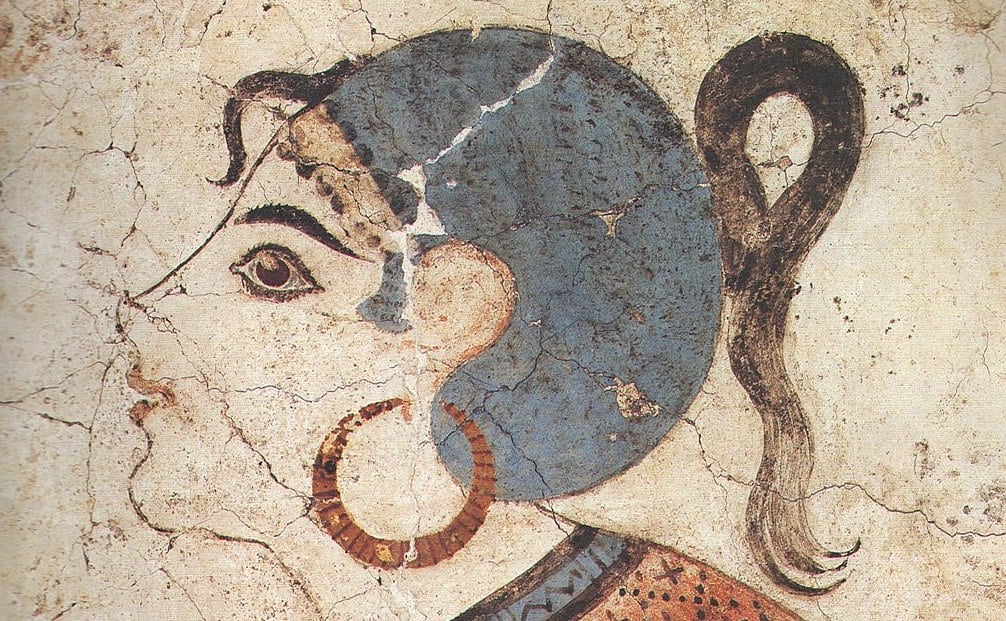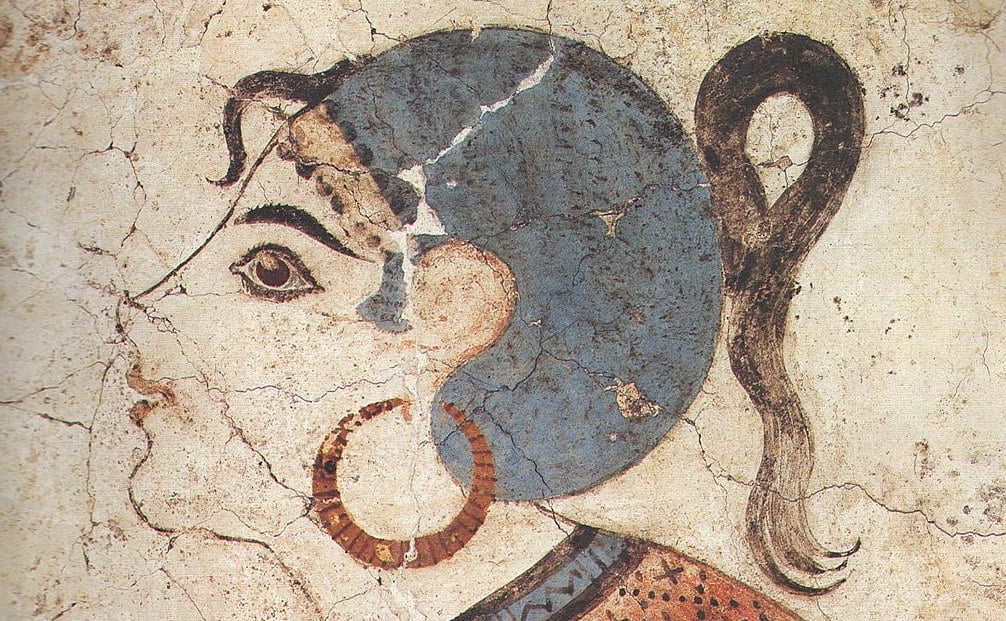

Thousands of ancient Greek vases, in all shapes and forms, are displayed across the world’s museums as silent testaments to what they once held. It was thousands of years ago when these exquisite pieces of art were filled with precious oils and ointments aromatized with myrrh, myrtle, thyme, saffron, almond blossom, and many other aromatic plants and flowers—scents that had captivated the ancient Greeks and have long since dissipated. Yet, through the many sources alive today, we can still venture through the mystical world of perfumes in ancient Greece, a world filled with fragrant aromas, divinity, and mastery.
In ancient Greece, there were many gods and myths, all connected to the divine. Perfumes were also included in Greek mythology. According to mythology, Aphrodite, the goddess of beauty, pricked herself on a white, odorless rose. She stained it red with her blood. Its beauty captivated Eros, the god of love and sex, and he kissed it. Allegedly, this is how the rose acquired its captivating aroma.
In another myth, Phaon, an old and ugly sailor who was making a living by carrying passengers from the Greek island of Lesvos to Asia Minor, one day unknowingly carried goddess Aphrodite. When he learned who she was and refused payment for her passage, the myth says she thanked him by giving him a perfumed ointment. When he applied it, he became young and beautiful, and every woman who crossed his path fell in love with him.
Myths aside, these also reveal the vital role of perfumes in antiquity as a means of seduction. There is evidence that perfume-making in ancient Greece began in Crete and other Greek colonies, where they mastered the art and began exporting their perfumes to Europe. It is believed that they were the first to create liquid perfumes, packaged in precious bottles made of gold, silver, or more commonly alabaster, each adorned with the decorations of its culture.

Perfume was central to worshipping the gods and goddesses. Vast quantities of perfume were used in religious ceremonies, and those too poor to afford fragrance for funerals painted the image of a perfume bottle on the coffin.
Theofrastus, a philosopher and botanist who lived in the 4th century BC, wrote an entire book called Treatise on Odors, where he describes age-old rituals, especially the use of incense for funerals, as well as practices for the living to take care of their body. In its pages, he documented iris, rose, mint, cinnamon, and myrtle as some of the perfume ingredients of the time. Theophrastus also provides the modern reader with a certain amount of vocabulary, the variety of which attests to the development of the art of perfumery in ancient Greece. After the Egyptians, the Greeks developed distillation techniques to create essences for their favorite scents, such as laurel, marjoram, iris, and cardamon.
Ancient Greeks played a crucial role in the development of perfumery. Not content with burning fragrance ingredients, they ground aromatic plants and resins and suspended them in oil, creating the first perfumes to apply to the skin.
According to the Fragonard Museum of Perfume in Paris, perfume manufacturing combines a ground aromatic essence soaked in water or wine with an excipient, usually a plant-based oil. These materials were mixed by soaking them at ambient temperature or heating them in a double boiler. Resin or rubber was used as a fixative.
Ancient Greeks believed that pleasant aromas could chase away evil spirits and had healing properties. The belief significantly contributed to the popularity of fragrances in ancient Greece, driven by a newfound interest in hygiene.
Hippocrates, the father of medicine, emphasized hygiene by prescribing fumigation and perfume to help prevent disease. The Greeks embraced aromatherapy, making it practical and scientific rather than mystical. They used different fragrances for each body part—mint for the arms and oregano oil for the feet. They perfumed themselves after bathing or before a special event. Women privately perfumed their bodies in their private quarters, called gynaeceum. Men did so more publicly at the public baths after exercise or in gymnasiums, where part of the area was dedicated to personal grooming.

Tablets in Linear B from the 12th century BC unearthed at the palace of Pylos in the Peloponnese listed various accounts that mention coriander used for perfume and the significance of the saffron trade. From this pre-Hellenic era, frescoes on Santorini at the Akrotiri archaeological site depict women collecting crocuses and saffron. The flowers were partially harvested for cosmetic purposes, followed by the widespread use of vases in Archaic Greece to condition perfumed oils.
According to the Fragonard Museum of Perfume, in the 7th and 6th centuries BC, Corinth exported thousands if not millions of small globular vases called aryballos across the Mediterranean. In the classical era, some individual perfume vases were made in shapes that appeared to evoke the products used to manufacture their contents, such as the miniature amphorae used to hold almond oil.

Through Alexander the Great’s conquests in the East, spices, incense, and new perfume ingredients became available—as precious as gold and in equally high demand.
In return for the Asian and Egyptian origins of perfume, the Greeks widely distributed bottles of molded glass (a technique imported from the Orient) starting in the 5th century BC. The luxury of these containers, which were sometimes made out of crystal or precious metals, corresponded to the refinement of their perfumed contents.
